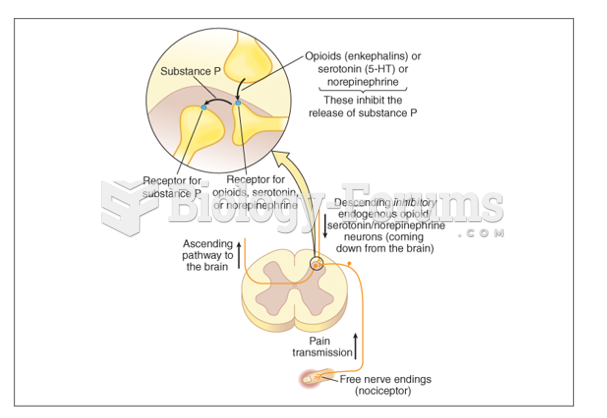This topic contains a solution. Click here to go to the answer
|
|
|
Did you know?
Nearly 31 million adults in America have a total cholesterol level that is more than 240 mg per dL.
Did you know?
In 1844, Charles Goodyear obtained the first patent for a rubber condom.
Did you know?
Ether was used widely for surgeries but became less popular because of its flammability and its tendency to cause vomiting. In England, it was quickly replaced by chloroform, but this agent caused many deaths and lost popularity.
Did you know?
Medication errors are more common among seriously ill patients than with those with minor conditions.
Did you know?
There are over 65,000 known species of protozoa. About 10,000 species are parasitic.







